

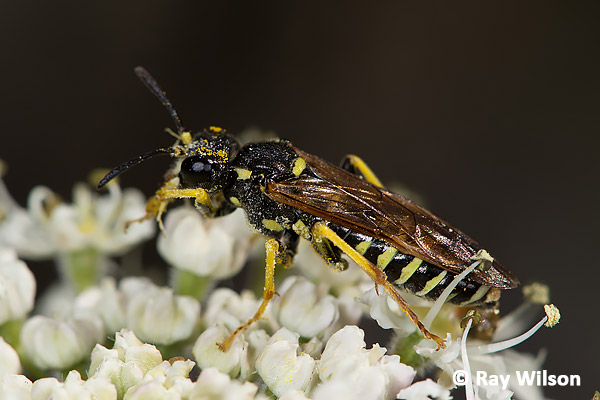
The Sawflies contain the most "primitive" hymenoptera with a body shape and wing venation similar to that of the ancestral forms found in the fossil record as far back as the Triassic Period (200 million years ago).
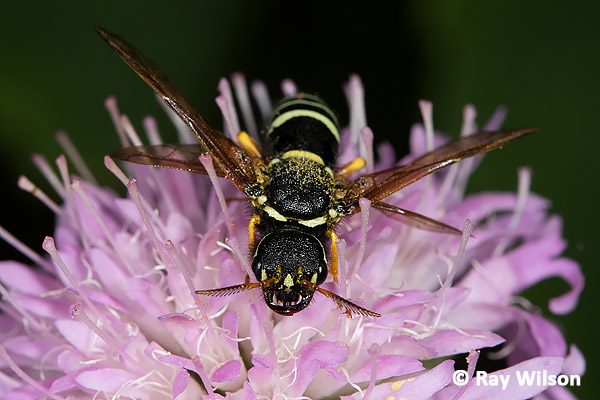
Sawfly larvae are almost all phytophagous (i.e. they eat plants) and to aid the female in laying her eggs safely concealed inside the host plant, they have a saw-like structure on their ovipositor which is used to cut through plant tissues.
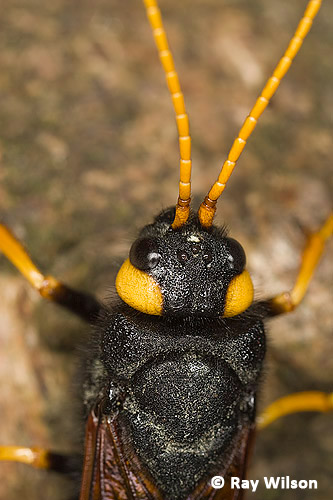
|
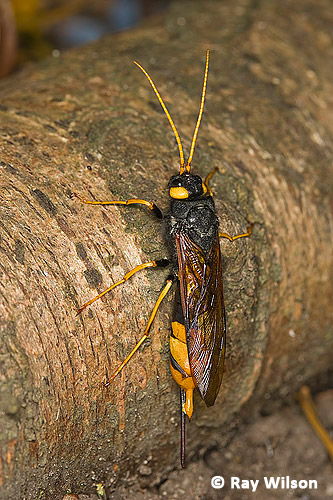
|
At 40mm in length, the Horntail (or Giant Wood Wasp) is Britain's largest sawfly. It lives in pine forests where its larvae feed on the living wood of the pine trees. The Horntail's long ovipositor lacks the "saw" that is characteristic of most female sawflies and is instead shaped like a smooth needle so that it can more easily penetrate the wood of pine trees.
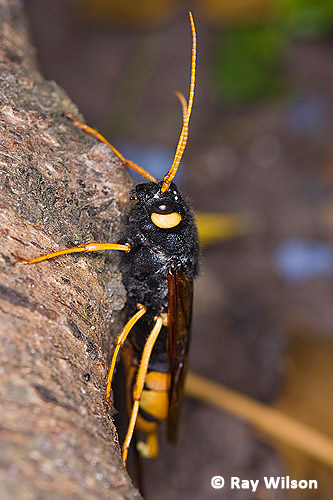 |
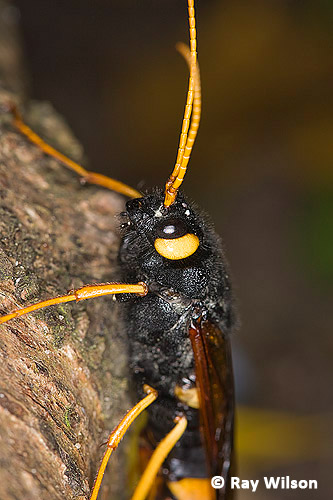 |
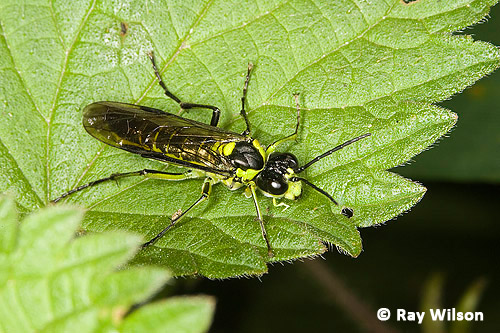
There are over 400 species of Tenthredinidae that occur in the UK, many of which are very similar and virtually impossible to identify to species level without killing them and dissecting their genetalia.
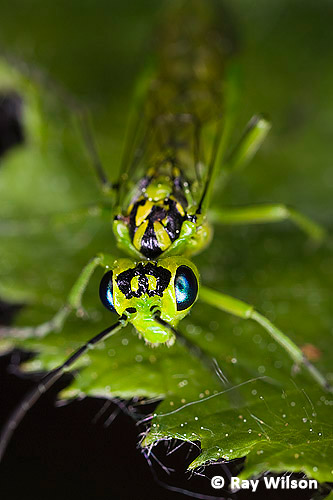
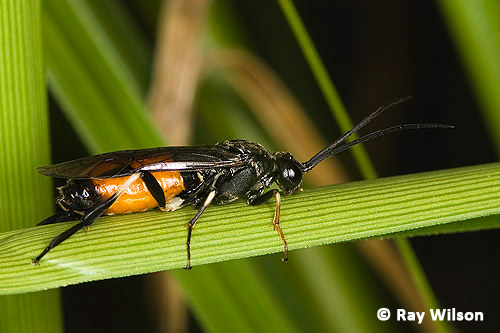
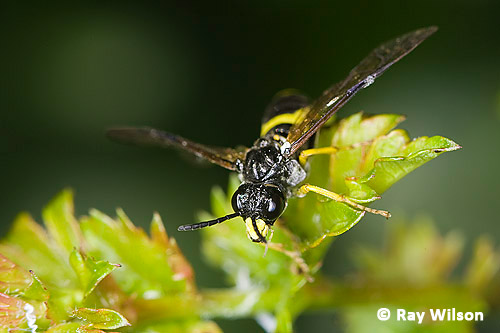
Ray Wilson owns the copyright of all images on this site.
They may not be used or copied in any form without prior written permission.
raywilsonphotography@googlemail.com